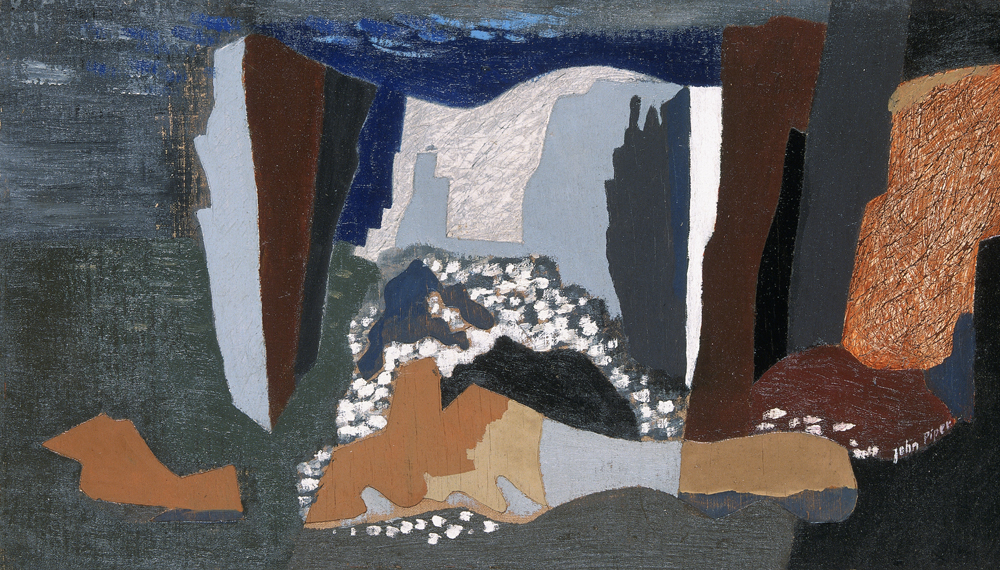Art in Britain after 1930

NMW A 2051, René Magritte, The Empty Mask , 1928

NMW A 269, John Piper, Coast of Pembroke , 1938-40, '© The Trustees of the John Piper Estate'
British artists adopted a wide range of approaches to making art during the mid-twentieth century, showing radical changes in a short space of time.
During the 1930s with the influence of modern European art, a move towards “pure abstraction” began in Britain. Artists explored the use of linear and geometric forms free from the direct representation of objects or the natural world.
With the arrival of the Second World War, a new style sometimes described as neo-romanticism emerged. This embodied a desire to return to a more truthful representation of nature and traditional values. Artists in Wales who drew strong inspiration from the landscape embraced this movement.
St Ives had become the centre of abstraction during the 1940s. In the late 1950s, this modern approach developed into a more physical, gestural and expressionist style of painting in Britain. As a result there was a return to the subjects of landscape and the figure, but treated in a non-representational way.